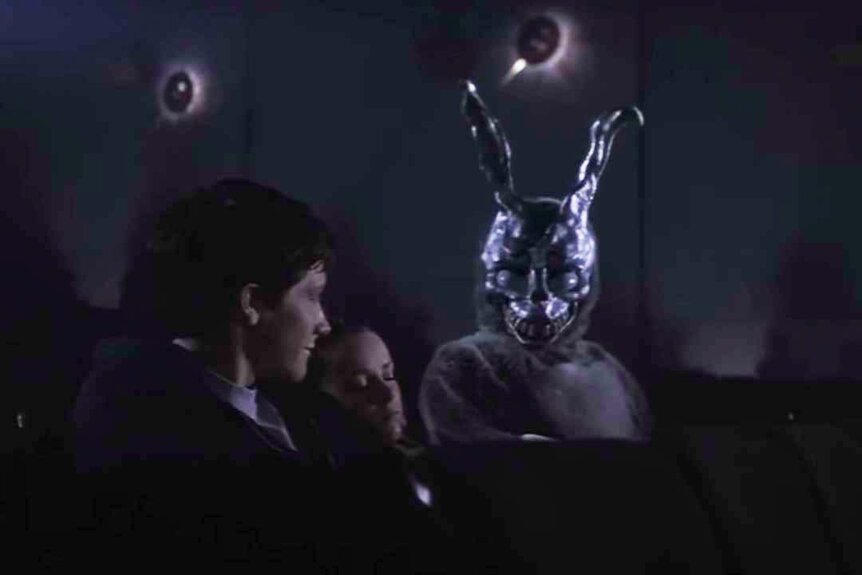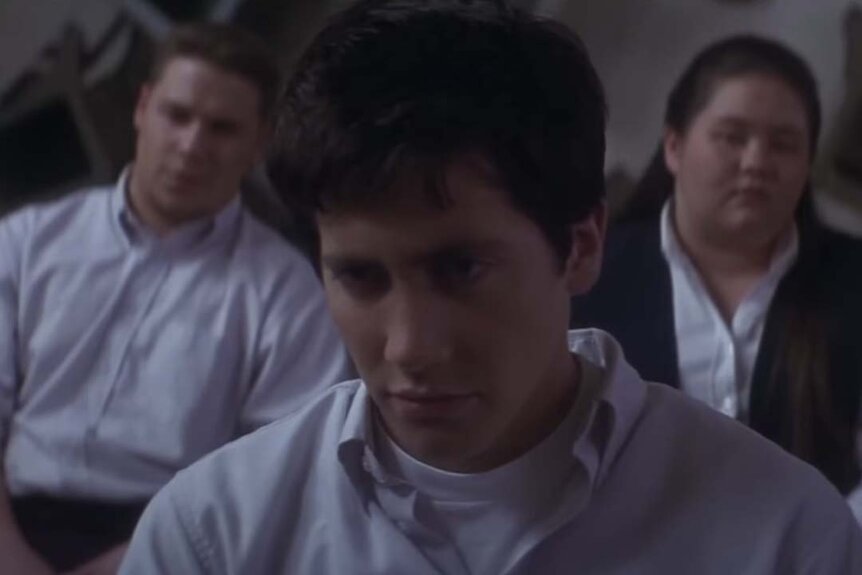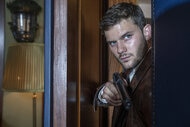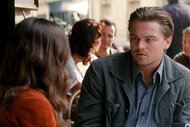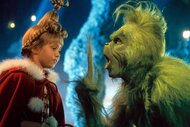Create a free profile to get unlimited access to exclusive videos, sweepstakes, and more!
What’s the Difference Between the Donnie Darko Theatrical and Director’s Cut?
Rabbits, time travel, and the Tangent Universe: Richard Kelley's director’s cut has all the answers.
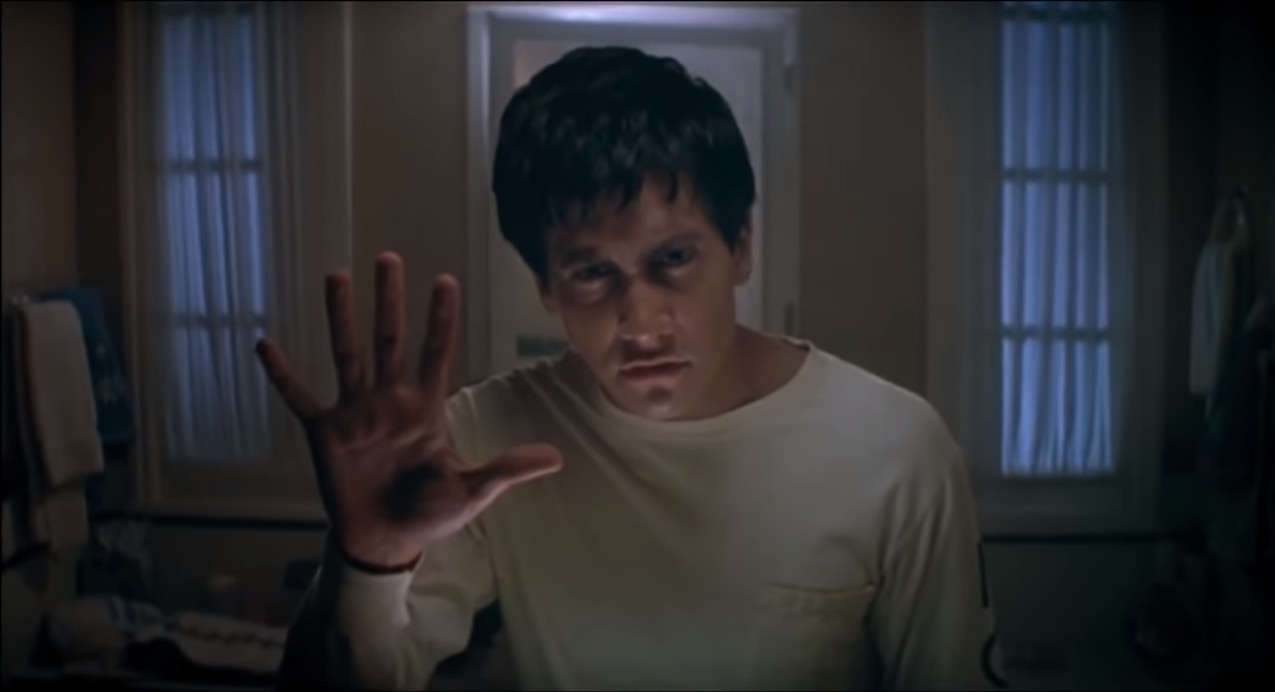
If you’ve seen and loved Donnie Darko (stream the director's cut on Peacock here), you know it’s easy to appreciate director Richard Kelley’s incredible 2001 sci-fi triumph for its engrossing human (and rabbit) characters and connections — even if you never fully wrapped your head around the movie’s time-bending plot... or the reasons behind Donnie’s 28-day trudge toward a self-sacrificing date with destiny.
Starring real-life siblings Jake and Maggie Gyllenhaal (as Donnie and his sister Elizabeth), Donnie Darko weaves a coming-of-age story that invites as many questions as it answers, a tantalizing puzzle only deepened by viewing the movie through Donnie’s perhaps-schizophrenic and reality-shifting point of view. The end of the movie shows Donnie literally bearing the full brunt of a single out-of-the-blue tragedy, one that essentially resets the timeline to wipe away all the death, perversion, and twisted mishaps that befall his family and key people, over the course of a single month, in his otherwise nostalgically tranquil town.
Does the Donnie Darko director’s cut change the story?
On one level, it’s an ending that intuitively demonstrates what’s happening. This strangely conflicted kid might’ve actually had his emotional act together all along, tapping into something hidden and deep in the slipstream-consciousness of space and time to trade his own life for the happiness of everyone else.
RELATED: How Christopher Nolan Saved Sci-Fi Cult Hit Donnie Darko From Purgatory 2 Decades Ago
But on another level, it’s all done through the power of heavy suggestion. There’s a mysterious book that supposedly has all the answers (and an equally mysterious “Grandma Death” character behind it), the hauntingly iconic apparition of Frank the rabbit (who compels Donnie’s odd behavior until the audience sees that maybe it’s not so odd), and a recurring spell of sleepwalking episodes where much of Donnie’s biggest gut-feeling decisions seem to, well, get decided.
But thanks to the movie’s resurgent second wind with home viewers after taking an early box office dive, Kelly decided to dig deeper into some of Donnie Darko’s lingering mysteries with a 2004 director’s cut edition. That’s what brings us to the real matter at hand: What does the director’s cut of Donnie Darko include that wasn't in the original film? What are its biggest revelations? And — perhaps the most important question of all — does the director’s cut fundamentally change the story?
Still the same Donnie Darko — with slightly less mystery
The short answer is no: The director’s cut of Donnie Darko doesn’t alter the basic events or plot-driving story forces that define the original film. But it does add images and some pretty dense lore information that combine to remove the mystery from much of the movie’s strange, time-recursive world — but even at that, you’ll still have to put on your thinking cap to reach any truly definitive conclusions.
Donnie Darko is an ambiguous movie in its original form, leaving viewers to speculate about whether there’s science or something a bit more supernatural driving the movie’s miraculous time-looping structure. The director’s cut more directly answers that riddle, using on-screen text from Grandma Death’s enigmatic in-movie philosophical treatise The Philosophy of Time Travel to explain that all of the film’s events — between the opening jet engine crash (which falls on Donnie’s house but leaves his family alive) and the later, duplicate crash (which falls in the same spot, only this time killing Donnie in his bedroom) — all are unfolding within a “Tangent Universe.”
RELATED: How James Cameron pushed and inspired Richard Kelly to (still) not give up on a Donnie Darko sequel
What’s the Tangent Universe? It’s an off-balance realm where bad things happen, compelling Donnie as its fated hero to course-correct the movie’s many tragedies as its “Living Receiver” — a misunderstood but super-powered agent able to wield superhuman powers (like Donnie’s apparent telekinesis) and re-set the timeline back to the happier, more stable “Primary Universe” in order to avert an even bigger apocalypse.
Tangent Universes and Living Receivers — yep, even with all that added lore, it’s still some pretty dense stuff. But just like George Lucas’ Midi-chlorians in the second Star Wars trilogy, it’s a plot-fitting way for Kelly to directly explain all the mind-bending phenomena that had previously tasked viewers with simply reading between the lines. And, just like those irksome Midi-chlorians, it left some die-hard Donnie Darko fans unhappy that the movie’s central cosmic mysteries could be accounted for using simple science and logic.
The other major story change in the director’s cut of Donnie Darko isn’t really all that major, though it similarly removes some of the mystery behind Donnie’s erratic and unpredictable behavior. The movie’s expanded version reveals that Donnie’s therapist Dr. Thurman (Katharine Ross) has been prescribing him placebo pills to quell the symptoms of his suspected paranoid schizophrenia, a switch-up that presumably suggests he’s fully in control of all his actions. All things considered, though, that’s a point that the original film’s larger story events already had invited audiences to go ahead and assume anyway.
Drew Barrymore makes a rabbit connection
Drew Barrymore helped finance Donnie Darko through her Flower Films production company, and as high school teacher Karen Pomeroy, she gets some of the original film’s most memorable moments. In addition to her classroom musings on “cellar door” being the most beautiful phrase in the English language, she also shares a quiet pause with teaching colleague Dr. Monnitoff (Noah Wyle), simply uttering the name “Donnie Darko” as both teachers exchange knowing glances and just nod their heads in silent agreement: Yeah — there’s definitely something different about this kid.
The nature of Barrymore’s scenes doesn't really change in the director’s cut, though new footage expands some of her classroom time to show Ms. Pomeroy reading a passage from Richard Adams’ Watership Down — complete with its overt rabbit references, all the better to help strengthen the suggestive power of Frank the rabbit’s ominous presence elsewhere in the movie. In all, the director’s cut adds 20 minutes of additional material to the original film’s 113-minute runtime, including less story-altering footage like Donnie playing an arcade game, evocative images of waves breaking on the beach, and some extremely tight close-ups of Donnie’s eyes.
RELATED: The Truth About Pocket Universes: The Science Behind Donnie Darko
Elsewhere, the director’s cut makes less seismic changes that nevertheless give a tweak or two to the original movie’s distinctive character. Thanks to a music-rights window that had opened since the release of the theatrical version, Kelly swapped out Echo and the Bunnymen’s “The Killing Moon” in the theatrical version’s high-impact opening moments in favor of “Never Tear Us Apart” by INXS — a change that still captures the essence of the movie’s late-1980s setting, but mixes up the pop-culture vibe.
No matter which version of Donnie Darko you watch, the movie remains an extraordinary sci-fi feast, striking a rare balance between genuine plot intrigue and deep character investment while throwing a ton of can’t-miss moments — many of them downright scary or hilarious in equal measure — at appreciative audiences. Like Quentin Tarantino's Pulp Fiction or Christopher Nolan’s Memento, it’s the kind of movie you can watch repeatedly and still discover something new and magical with every pass, making it must-see viewing for any fan of science fiction — or, for that matter, for any fan of spellbinding stories in general.
Watch the director’s cut of Donnie Darko, streaming on Peacock here.
